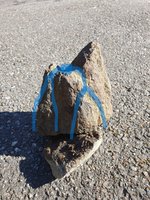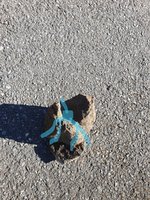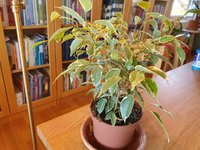Hello! I am very new to bonsai, I just started getting seriously interested in january. So I don't even have a single tree. In this post I have a bunch of different questions about different subjects, and maybe they would be better asked in their respective sub-forums. But since they are probably very noob-ish questions, I thought they could work here. Please tell me if I should do something differently! This turned out very lengthy, so I have a TL R at the bottom if you don’t want to listen to me ramble, heh.
R at the bottom if you don’t want to listen to me ramble, heh.
Alright, so I know that the best idea would be to buy some nice nursery stock that I can work on immediately, and I plan on doing that, (right now I am thinking either a cotoneaster (Cotoneaster lucidus), hawthorn (Crataegus flabellata var. grayana), or purple chokeberry (Aronia x prunifolia) as they all are very hardy for my climate, relatively easily accessible, and flower and carry fruits (which I love the look of) but I haven’t had any opportunity to go to a nursery. In the meantime I haven’t been able to resist buying other plants. Currently I have three variegated Ficus benjamina, (in the same pot, got them from a grocery store) and five tiny bay leaf saplings. None of them are mallsai, they were just in normal pots. All of them are very small, their trunks are all less than 5 mm (0,2 in.) thick. I view them as future investments, that I will hopefully be very glad I got them and let them grow in a few years.
So, TL R:
R:
I am an extreme noob, who currently has some Ficus benjamina, and many bay leaf saplings. I plan on getting a bigger plant from a nursery
I want to turn at least one of the ficus into a root over rock, how would you recommend I go about this? And do you think any of these rocks could make a good ROR?
Are bay leaf trees even suitable for bonsai?
Can you make a decent soil mix using potting soil, perlite, and gravel? Would adding crushed terracotta help?
How should fertilizing be approached?
Thanks for taking the time to read this!
Alright, so I know that the best idea would be to buy some nice nursery stock that I can work on immediately, and I plan on doing that, (right now I am thinking either a cotoneaster (Cotoneaster lucidus), hawthorn (Crataegus flabellata var. grayana), or purple chokeberry (Aronia x prunifolia) as they all are very hardy for my climate, relatively easily accessible, and flower and carry fruits (which I love the look of) but I haven’t had any opportunity to go to a nursery. In the meantime I haven’t been able to resist buying other plants. Currently I have three variegated Ficus benjamina, (in the same pot, got them from a grocery store) and five tiny bay leaf saplings. None of them are mallsai, they were just in normal pots. All of them are very small, their trunks are all less than 5 mm (0,2 in.) thick. I view them as future investments, that I will hopefully be very glad I got them and let them grow in a few years.
- I thought I could take advantage of the undeveloped nature of the ficus, since I would really like to turn at least one of them into a root over rock. From what I understand it is best to start with a small sapling for that, so that it develops with and into the rock. Ficus benjamina are also well suited for root over rock, I read. My question is, how would you recommend I go about this?I have found a lot of different ways to do it online, but all of them included guiding the roots into the cracks, and filling the cracks with moisture retaining soil to coax them to follow. Then it is covered up with soil and left the heck alone for at least a year. But I saw one person cover the roots with tin foil to stop them from growing away from the rock, and another method was to fill up around the rock with plain sand. I am a bit sceptical of the foil method, for some reason it feels like it would cause a lack of breathability which might be harmful? I don’t know. And will the roots truly avoid growing into the sand?
The rock that it will be planted on is also a work in progress. I don’t have any pet stores that carry cool textured rocks close to where I live (which was a tip I saw for finding suitable rocks), and the local rocks are not great either. The ones in the pictures are the most promising ones I have been able to find. The first one, with the blue drawings marking the potential placement of the sapling and roots, is the one I feel has the best potential. I don’t really like the color of the rock, but the shape feels interesting to me, and it feels plausible that a seed could sprout in it naturally. I think I might have to fill up the cavity a bit though. I also like the dark color and white streaks of the rock in the second set of pictures. Do you think any of them have any potential, or should I bite the bullet and order some better rocks online? In any case, I wont do anything with it until it is warm enough for it to be outside in the sun.
- Regarding the bay leaf (Laurus nobilis), I mostly bought it because I would really like to have access to fresh bay leaves, and having it in a pot means that I can grow it where I live despite the harsh winters. The question is if it has any potential as bonsai? I have found some nice pictures of bay leaf bonsai, but not many. How come? Is it a bad idea to try to do anything with them? I have five tiny saplings, the rest of them I promised to give away (and I really don’t have the space). I trimmed the top when I planted them, as they were in squished together in a small pot, and I thougth it would help the roots recover if I removed some foilage and the growing tips.
- I mixed a small bag of perlite, some regular potted plant mix, and aquarium gravel to make a hopefully decent well draining soil mix. It’s what I planted the laurels in. I now know that pumice is generally better than perlite and serves the same purpose, and I think it might be a bit heavy on the organics, but I suppose I will find out. I heard that finely crushed bricks/terracotta could be good to add, what is your perspective on that? What can I do differently the next time I mix soil? It’s all very overwhelming. Oh, and in the bottom of the pots I put some leca and shards of terracotta, which should help drainage, right?
- Can you recommend a good resource about fertilizing bonsai? I can’t seem to find any consensus about what to use. A chain nursery has a store close to me, and they sell a liquid fertilizer made of fermented organic matter. From my understanding natural fertilizers are generally preferred, but it doesn’t list the NPK. Could it be a good option? Maybe I should try comparing it with another type.
So, TL
I am an extreme noob, who currently has some Ficus benjamina, and many bay leaf saplings. I plan on getting a bigger plant from a nursery
I want to turn at least one of the ficus into a root over rock, how would you recommend I go about this? And do you think any of these rocks could make a good ROR?
Are bay leaf trees even suitable for bonsai?
Can you make a decent soil mix using potting soil, perlite, and gravel? Would adding crushed terracotta help?
How should fertilizing be approached?
Thanks for taking the time to read this!
Attachments
-
 rock1_back_marked.jpg378.6 KB · Views: 34
rock1_back_marked.jpg378.6 KB · Views: 34 -
 rock1_front_marked.jpg372.1 KB · Views: 27
rock1_front_marked.jpg372.1 KB · Views: 27 -
 rock1_top_marked.jpg517.3 KB · Views: 28
rock1_top_marked.jpg517.3 KB · Views: 28 -
 20230419_104725.jpg211 KB · Views: 29
20230419_104725.jpg211 KB · Views: 29 -
 20230427_090131.jpg462.4 KB · Views: 25
20230427_090131.jpg462.4 KB · Views: 25 -
 20230427_090143.jpg426.8 KB · Views: 21
20230427_090143.jpg426.8 KB · Views: 21 -
 20230427_090147.jpg420.3 KB · Views: 26
20230427_090147.jpg420.3 KB · Views: 26 -
 20230419_104836.jpg230.4 KB · Views: 30
20230419_104836.jpg230.4 KB · Views: 30 -
 20230419_105635.jpg261.3 KB · Views: 34
20230419_105635.jpg261.3 KB · Views: 34
